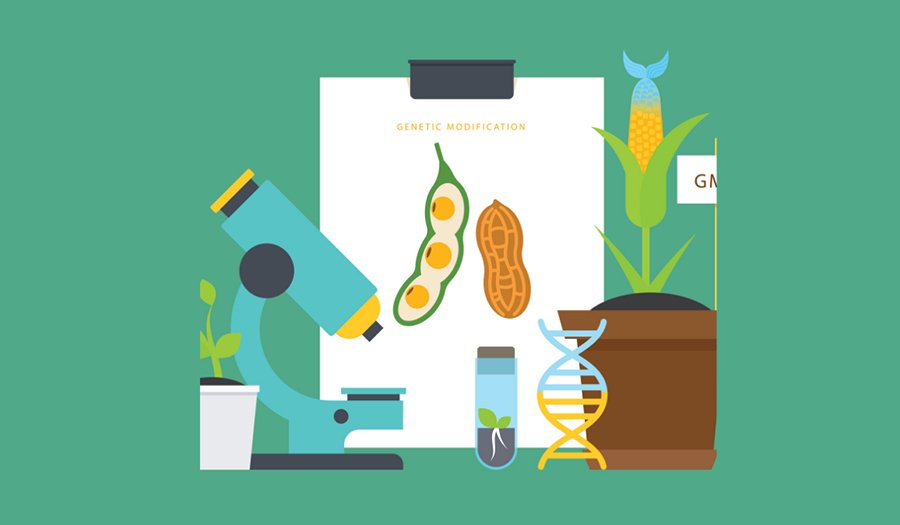
Mandatory GMO Labeling: Pros and Cons
Photo from tracegains
Originally Posted On: Mandatory GMO Labeling: Pros and Cons (tracegains.com)
Genetically modified (GMO) – or bioengineered (BE) – food labeling remains a hotly debated topic. Admittedly, the facts can be confusing.
For starters, it’s a lot more prevalent than most consumers realize. According to the U.S. Department of Agriculture (USDA), up to 92% of corn has been bioengineered, 94% of soybeans, and 96% of cotton. Some estimates suggest that three-quarters of food in the average grocery store has been bioengineered in some way.
But, if you ask consumers, they’re still deeply divided about BE foods. A 2018 Pew Research Center study found that 49% of Americans believe BE foods are bad for their health. That number was up 10 points over a similar survey two years earlier.
Whether it’s because of the increasing prevalence of BE foods, or the growing public mistrust of them, Congress passed the National Bioengineered Food Disclosure Standard in 2016, which charged the USDA with establishing a labeling standard for BE foods.
In short, the law requires BE labeling for food and beverages intended for human consumption that contain more than 5% bioengineered ingredients.
Exclusions include:
- Foods derived from animals, such as eggs, meat, and milk.
- Refined ingredients, such as oils and sugars.
- Food served in a restaurant.
- Foods manufactured and sold by small producers (local shops, etc.).
- Any non-food products.
The labels must appear one of three ways:
- As text on food packaging.
- As a symbol identifying bioengineering.
- As a scannable electronic or digital link.
Drafted on Feb. 19, 2019, this rule’s implementation didn’t go live until Jan. 1, 2020. However, smaller manufacturers had until Jan. 1, 2021, while mandatory compliance doesn’t kick in until Jan. 1, 2022.
Is BE labeling good for consumers? Could it hurt manufacturers that use BEs in their products?
It’s tough to take one side or the other. To help clarify the topic, we’ve assembled a list of a few of the pros and cons of mandatory GMO labeling.
Mandatory vs. Voluntary Labeling
There’s a difference between mandatory and voluntary BE labeling. First of all, voluntary labeling is more about marketing to consumers, letting BE-conscious shoppers know products don’t contain bioengineered ingredients.
On the other hand, mandatory labeling goes significantly further and requires all food products containing BE ingredients to inform consumers.
Pros and Cons to Mandatory GMO Labeling
PROS:
Right to Know: Consumers have a right to know what’s in their food. And if a consumer is concerned about BE ingredients in their food products, labeling will help with their buying decisions.
Helps Vegetarians, Vegans, and Certain Religions: By adding labels to BE products, vegetarians, vegans, and those practicing certain religions can quickly determine if a product is modified.
Everyone Else Is Doing It: At least 64 countries worldwide, including the European Union, Australia, Brazil, China, Japan, and Russia, have at least some BE labeling requirements for foods. And the vast majority of U.S. consumers support mandatory BE labeling.
CONS:
Lack of Understanding GMOs: While consumers can quickly determine which products contain BE ingredients with an implemented labeling system, there’s still a sizable segment of the population that doesn’t entirely understand what the terms “genetically” or “bioengineered” mean. This lack of awareness could hurt many manufacturers, as consumers might view the label as a warning. For example, a 2015 FooDS survey revealed that roughly 80% of Americans support the mandatory labeling of GMO foods “produced with genetic engineering.” Still, they also said they would support “mandatory labels on foods containing DNA.”
Costs Would Trickle Down: Manufacturers still argue the overall implementation costs are prohibitive and might eventually trickle down to consumers’ pockets, driving prices up in grocery stores.
There Are Already Non-GMO Products: For consumers who prefer non-BE products, they’re already on store shelves.
With mandatory BE labeling, it’s more important than ever that manufacturers know exactly where their ingredients come from and what each lot shipment’s specifications are to ensure they’re always in compliance with whatever appears on the label of finished products.
TraceGains has built a networked Specification Management solution that makes the specification process fast and easy. Companies can quickly create, publish, and update raw material and finished goods specifications, automating tedious change management and version control processes. Join TraceGains for a webinar to learn how networked Specification Management allows teams to create, publish, and update raw material and finished goods specifications in a single networked platform. Register here.
